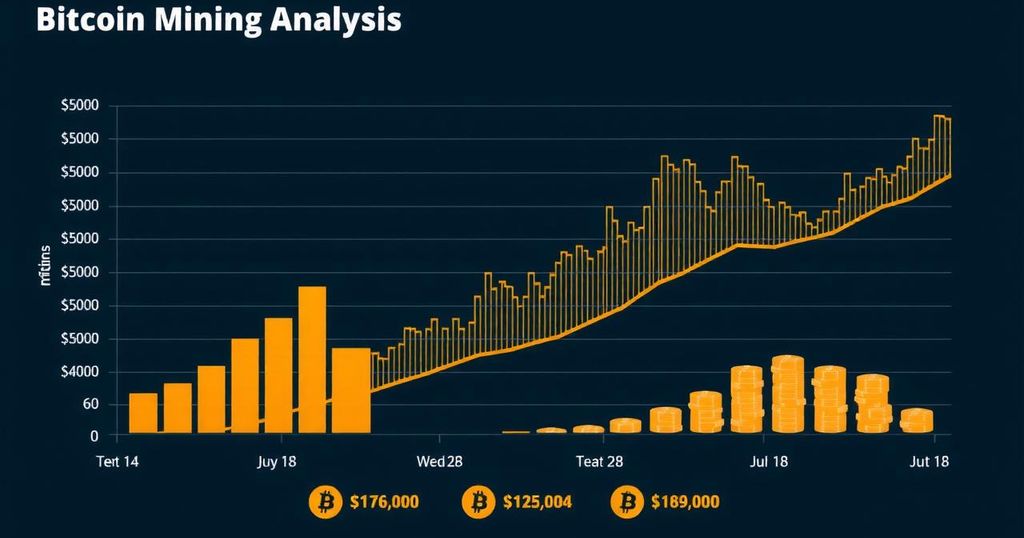Understanding Hash Price Dynamics: A Key Revenue Metric for Bitcoin Miners According to Compass Mining Analysis
In a recent analysis by Konrad Fitzpatrick, a mining analyst at Compass Mining, the critical metric known as hash price has been emphasized as a vital tool for Bitcoin miners to evaluate their current and prospective revenue. According to Compass Mining’s informative blog post, the hash price is defined as the amount of Bitcoin a miner can anticipate earning per terahash per second (TH/s) or petahash per second (PH/s), with 1 PH/s equating to 1,000 TH/s on a daily basis.
Furthermore, the analysts at Compass Mining elucidate that miners possess the option to express hash price in terms of US dollars or their local currency, providing an alternative revenue assessment method. The analysis highlights the importance of denominating revenue per hash, enabling miners to effectively gauge the earning capabilities of individual Application-Specific Integrated Circuits (ASICs), clusters of mining hardware, or entire fleets of ASICs owned by a company.
By diving deeper into the factors that influence hash price, miners are better equipped to predict and optimize their operations with accuracy. The hash price figure directly correlates to revenue generated per TH/s, which is influenced by factors including the current block subsidy, transaction fees, and mining difficulty. Additionally, it is crucial to note that both block subsidies and transaction fees are closely tied to Bitcoin’s exchange rate against fiat currencies.
When Bitcoin’s price in USD rises significantly compared to the cost of electricity, new hashing power commonly enters the market, influencing block generation rates and overall hash power. This influx of new hashrate often leads to accelerated block mining times, deviating from the intended average of ten minutes per block, which prompts an upward adjustment in mining difficulty.
The analysts at Compass Mining further explore the relationship between hash price and Bitcoin’s price trajectory, positing that if hashrate and difficulty remain stable, a 1% increase in the price of Bitcoin is likely to result in a corresponding 1% increase in hash price or miner revenue. In assessing the impact of transaction fees on miner revenue, the analysis demonstrates that spikes in transaction costs—such as the peak observed in December 2017—result in a direct correlation with increases in hash price, drawing attention to the significant influence of transaction fees on overall mining profitability.
Looking ahead, the consensus among Bitcoin enthusiasts is that levels of transaction fees are likely to experience sustained elevations, driven by increased demand for block space and the growing utility of the blockchain in future developments. Consequently, one can speculate that a scenario in which Bitcoin’s market capitalization approaches that of gold, accompanied by substantial transaction fees, could produce a remarkably high hash price in alignment with current block subsidies.
Despite the potential for Bitcoin prices to ascend past historical benchmarks, it is imperative to recognize the challenges posed by the increasing global hashrate and intensified competition among miners, leading to a gradual decline in hash price. To remain competitive and environmentally sustainable, miners may need to adopt more advanced and efficient mining machinery. For instance, the newly released S21 Pro ASIC demonstrates superior efficiency compared to its predecessors, positioning itself advantageously in a market where hash prices are forecasted to decrease.
In conclusion, while the anticipation of soaring hash prices looms, Bitcoin miners are encouraged to enhance their operational efficiencies through upgrading their mining fleets and securing competitive energy pricing. By remaining proactive in troubleshooting the effects of rising mining difficulties and transaction fees, miners may successfully navigate the evolving landscape of Bitcoin mining, ensuring their viability until broader adoption results in an upswing for the entire sector.






Post Comment